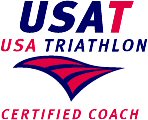Cardiorespiratory Training for Fitness Goals
There are several components to an effective conditioning and weight loss program: nutrition, warm-up, flexibility training, strength training, muscular endurance training, cardiovascular training, and cool down. While there are many diet and resistance training programs, cardiorespiratory conditioning is often overlooked -- but shouldn't be.
By using all of the components of cardiorespiratory training (aerobic, anaerobic threshold, and anaerobic), you can burn more calories, reduce the risk factors for cardiovascular disease, and improve your performance in everyday activities (such as work, recreational sports, etc.). The key to cardiorespiratory training is intervals.
The benefits of interval training are:
- More calories are burned than exercising at a continuous rate.
- There may be an increase in the amount fat calories burned, depending the duration of activity.
- Avoiding monotonous exercise intensities provides positive motivation, making the program easier to stick with.
- Overloading the heart and lungs will increase the efficiency of the cardiovascular and respiratory systems.
In achieving weight loss, the amount of fat burned during the day is even more important than how much fat is burned during a workout. Studies have shown that interval training raises metabolism after a workout and keeps it higher for a longer period than any "steady state" workout.
Your Cardiorespiratory Training for Fitness program begins with a fitness assessment:
- General and Medical History
- Physical Activity Readiness Questionnaire (PAR-Q)
- Medical and Personal Information
- Calculation of your Resting Heart Rate
- Calculation of your Maximum Heart Rate - with any necessary modifications based on medications
- Establishment of Training Target Heart Rate Zones
Based on this data, we will develop a 12-week cardiorespiratory program for you, incorporating interval training utilizing your three heart rate training zones. Each individual program will work on cardio strength, leg strength, heart rate recovery, and improved endurance.
There are several options for cardiorespiratory workouts: walk/jog/run, stationary bicycle, spin bike, elliptical fitness machine, Stairmaster, deep water jogging, etc.
It is strongly recommended that participants use a heart rate monitor for their cardiorespiratory training.
Specialized Cardiorespiratory Training Programs
Specialized training programs are available for individual circumstances, including:
Body Composition Goals
- Weight Loss
- Obesity
- Overcoming Fitness Plateaus
- Weight Gain
Fitness Goals for Special Populations
- Hypertension
- Coronary Heart Disease
- Arthritis
- Prenatal
- Post-Pregnancy
How do I begin?
Contact Coach Ken Johnson at for your initial assessment and to discuss developing your complete fitness program.








